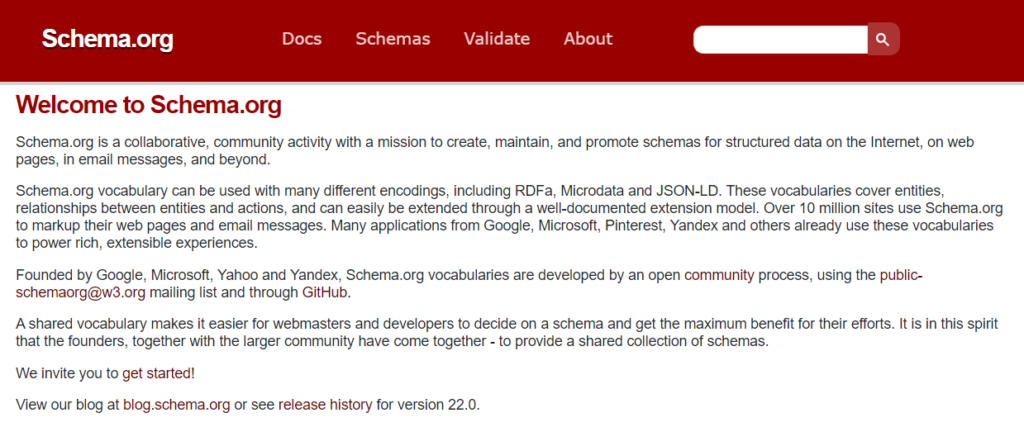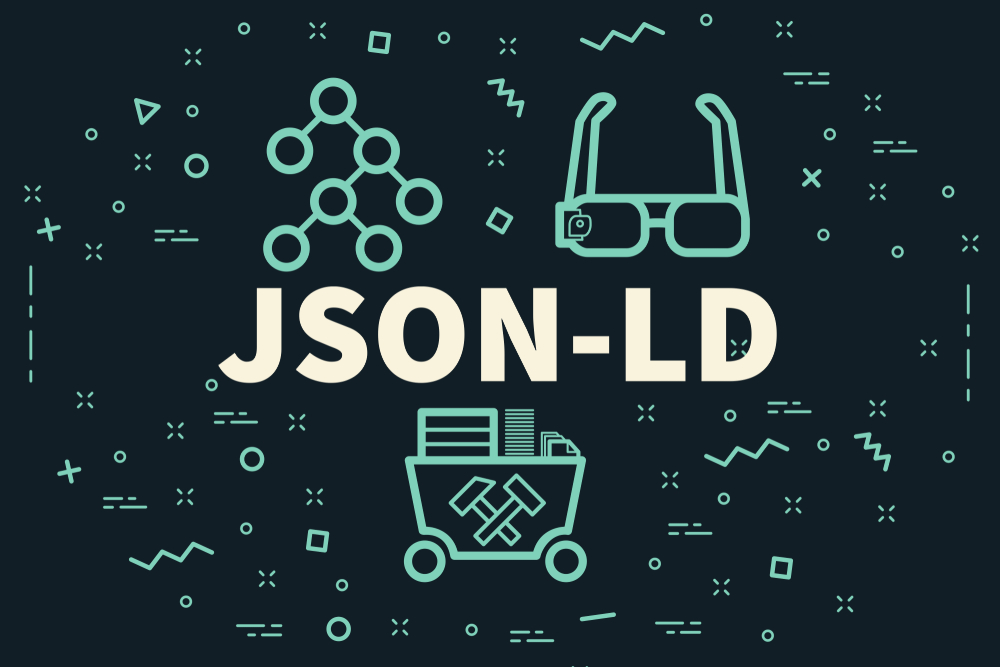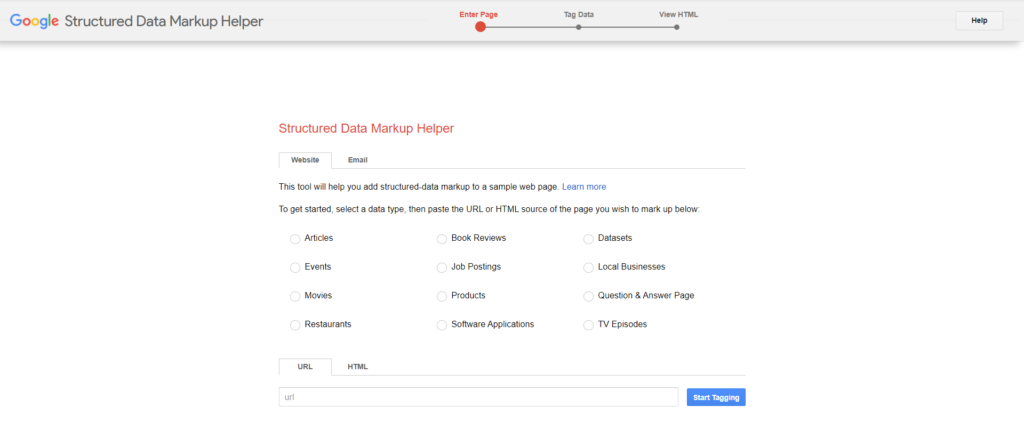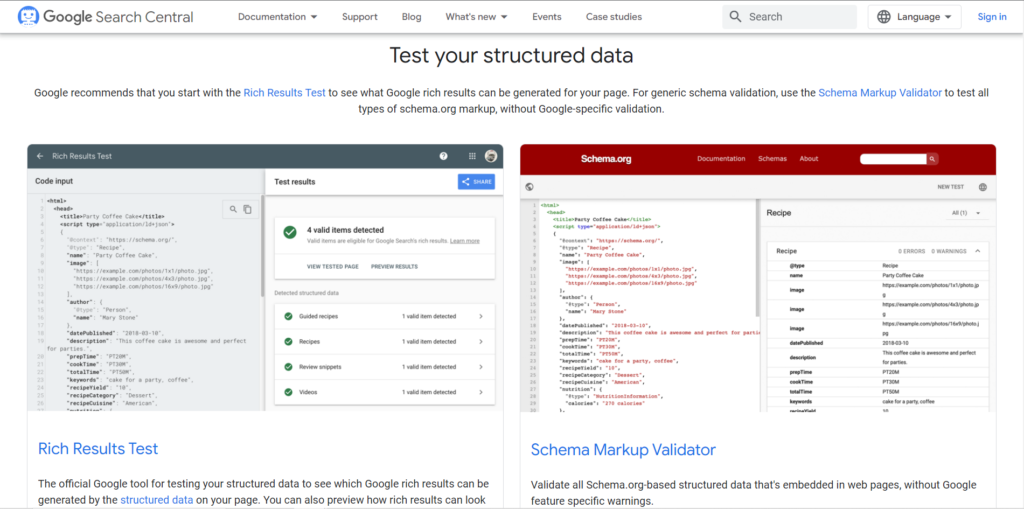Creating helpful content is only half of the journey when it comes to optimizing your website for search. You also have to make sure that your content is organized and tagged properly so that search engines can properly read it. This is where schema markup comes in.
Schema markup is all about tagging your content to help search engines better interpret the context of a web page, allowing them to rank your content appropriately on the results page.
What is schema markup?

Schema markup, found at schema.org, is a code in the form of structured data that conveys the meaning of your webpage to search engines. This code helps search bots recognize every page, whether it’s an article, product, recipe, event, etc.
Consider it a language that is easy to understand by search engines to better evaluate the relevance of a web page with its content type. As a result, the pages get indexed in more relevant categories and serve the search results accordingly.
Top search engines like Google, Bing, Yandex, and Yahoo support schema markup. This means that employing this code in your website optimizes you for multiple search engines.
What is the role of schema markup?
Schema markup ensures that search engines understand the context and content of your web pages. It optimizes your articles for rich snippets by highlighting all the crucial information on the page and making sure all the details look organizes on the search engine results page (SERP).
Additionally, employing schema markup leads to a better user experience since it optimizes you for zero-click searches. Zero-click searches happen when users find the answer they need on the SERP, meaning they don’t click on any of the web pages anymore. Schema markup enables search engines to display your content as a rich result. These rich results are displayed prominently on the SERP and include extra information about a page, like business ratings, steps of a how-to guide, and more.
What is the significance of schema markup in SEO?
Search engines can only understand code. They can’t decipher the context of a web page from its visual content and other hidden meanings as humans do. As such, you must make search engines understand and categorize your web pages to help them index and rank your website faster.
Without schema markup, a product page will continue to show among blog articles, events, and eCommerce results. Users may find it hard to navigate to find your product as it may be hiding in a list of mismatched results.
For example, a software page, if not recognized as a product or service, may appear in results with blog posts and articles. It will be a misfit in searches and fail to attract traffic. However, if the same page is enriched with microdata, search engines can present it to relevant searches so that more users can click on it.
Schema.org explains it best: “Search engines have a limited understanding of what is being discussed on (your web pages). By adding tags to the HTML of your web pages—tags that say, ‘Hey search engine, this information describes this specific movie, place, person, or video’—you can help search engines and other applications better understand your content and display it in a relevant, useful way.”
What is schema markup used for?
Being a webmaster, you can mark up information on web pages for several items. Some types of schema markup are:
- Organizations
- Person
- Events
- Products offers
- Recipes
- Reviews
- Book
- Videos
- Jobs
- Movies
- Music
- Place
- Local business
3 schema encoding types for schema markup
Here are the 3 kinds of encoding for schema markup.
- JSON-LD

JSON-LD, or JavaScript Object Notation for Linked Data, is a scripting language that empowers a publisher to convey significant data sets or information to search engines. It can be added to the head or content section of a web page. Being separate from HTML, JSON-LD is easy to review and modify.
Among the three encoding types, Google recommends JSON-LD because it’s the easiest to maintain.
- Microdata
Microdata is an older form of writing schema. It needs more technical knowledge and effort to add, which may lead to a higher risk of errors. It works almost the same as JSON-LD but has a different format; it’s embedded into the HTML code of a web page. Beginners may find it difficult to add or update microdata on their sites.
- RDFa
RDFa stands for Resource Description Framework in attributes. It’s considered an enhancement of the HTML code. You can easily add this code to a web page with HTML tags and attributes. If the existing attributes are not enough to define a page, you can create new vocabularies.
RDFa proves to be a better communication medium with Google with little interference to the code as compared to the microdata method.
Best practices to implement schema markup
Follow these best practices in implementing schema markup to level up your SEO strategy.
- Add the right schema markup

Among the various types of schema markup, you must choose the one that best describes the content of your web page. Use event markup to promote an upcoming event, or article schema to ensure your recent blog post reaches top positions in SERP.
Try Google’s Structured Data Markup Helper to find schema tags suitable to your web pages.
- Follow schema.org guidelines
Follow the guidelines laid down by schema.org. Doing so ensures that your web pages appear in relevant search results. Adding tags can define the relevance of a page and improve user experience.
- Add code or use a plugin
If you manage an online store, consult with your e-commerce development company if they are adding a code manually or providing a tool. Using a tool is preferable since it makes the implementation and updating of schema markup easier.
For a content management system like WordPress, you can find several schema plug-ins. Some examples are Schema Pro, Rankmath, and Yoast. To implement schemas in a Magento store, you can try extensions like SEO Ultimate Pack by FME.
- Test your markup

After adding schema markup on your site, you need to test its validity to make sure it’s working properly. You can use Google’s Structured Data Testing Tool for this. It will point out errors or warnings and validate your structured markup data before search engines crawl your website.
- Update regularly
To keep up with the cut-throat competition, you may need to update the content regularly. Consider adding reviews, FAQs, or tables or graphs. Whenever you refresh your content, don’t forget to update the schema markup tags as well. Keep an eye on your competitors and see what tags they use to implement the same content you publish on your site.
- Monitor performance
Monitor your web pages to evaluate your schema markup, especially web pages that you recently updated. Google Search Console can help you monitor an increase in organic traffic and impressions due to the changes in the schema. You should also consider reviewing your click-through rate to further refine your user experience and engagement.
- Link to high-authority sites
You can create context the natural way by linking to high-authority blogs and websites. Remember to only link to reputable sites that provide fact-checked information, such as BBC, The Guardian, and The Washington. External linking gives search engines an idea of what your web page talks about, helping boost your SEO score.
Amp Up Your SEO with Schema Markup
Schema markup is an effective tool for creating context for web pages to help search engines present them better. It leads to higher website visibility in SERPs and better user experience. Using the recommended format and following the practices, you can effectively implement schema markup to your product pages, service pages, and blogs.
If you need assistance with technical SEO, Spiralytics is here to help. A trusted SEO agency in the Philippines, Spiralytics guides businesses of all sizes toward their search optimization goals through best practices, data-driven strategies, and seasoned professionals.
Contact us today to start elevating your SEO strategy.





